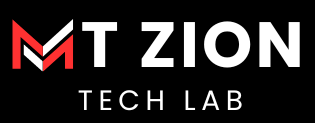In the ever-evolving landscape of search engine optimization (SEO), understanding search intent has become paramount. It’s no longer enough to stuff keywords into your content; you need to provide genuine value to your audience. By aligning your content with the underlying purpose of a search query, you can significantly boost your rankings and drive organic traffic.
What is Search Intent?
Search intent refers to the reason behind a user’s search query. It’s the underlying motivation or goal that drives someone to type specific keywords into a search engine. Understanding search intent is crucial because search engines prioritize content that fulfills the user’s needs.
Types of Search Intent
There are primarily four types of search intent:
- Informational: Users are seeking information or knowledge about a topic.
- Navigational: Users are looking for a specific website or page.
- Transactional: Users are ready to make a purchase or take a specific action.
- Commercial Investigation: Users are researching products or services before making a purchase.
How to Identify Search Intent
To effectively create content that aligns with search intent, you need to understand how to identify it. Here are some key strategies:
- Keyword Research: Use tools like Google Keyword Planner, SEMrush, or Ahrefs to identify relevant keywords and their search volume.
- SERP Analysis: Examine the top-ranking results for your target keywords to understand the format and content that Google favors.
- User Behavior Analysis: Study user behavior metrics like click-through rates and bounce rates to gain insights into user intent.
- Content Gap Analysis: Identify topics or questions that your competitors haven’t addressed.
Crafting Content with Search Intent in Mind
Once you’ve identified the search intent behind a specific keyword, you can tailor your content accordingly:
- Informational Queries: Provide comprehensive and informative content that answers the user’s questions.
- Navigational Queries: Optimize your website’s structure and internal linking to make it easy for users to find what they’re looking for.
- Transactional Queries: Create persuasive content that highlights the benefits of your product or service and includes clear calls to action.
- Commercial Investigation Queries: Offer in-depth product comparisons, reviews, and buying guides.
Conclusion
Understanding and addressing search intent is a fundamental aspect of successful content marketing. By aligning your content with the user’s needs and expectations, you can improve your search engine rankings, increase organic traffic, and ultimately drive conversions. Remember, search engines reward content that provides value to users, so focus on creating high-quality, informative, and engaging content that fulfills search intent.
By consistently analyzing search intent and adapting your content strategy accordingly, you can stay ahead of the competition and achieve long-term success in the digital landscape.

